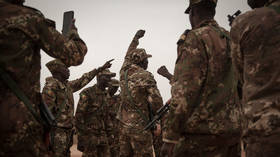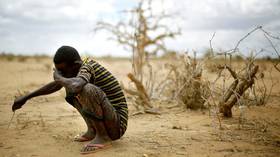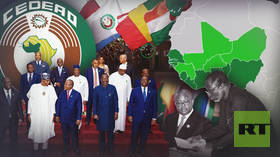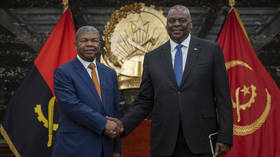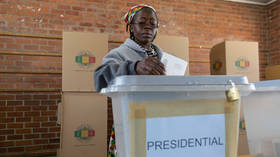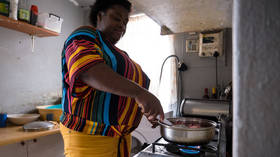Angola Avante: How this proud African nation destroyed the oldest colonial empire
 Sergei Karamaev, RT, November 11, 2023 —
Sergei Karamaev, RT, November 11, 2023 —
The road to freedom was neither peaceful, nor short or easy for Angola – too many strong players took part in the race.
On November 11, the People’s Republic of Angola celebrates its Independence Day, having ceased to be a colony almost half-a-century ago. But independence wasn’t handed to the country on a silver platter – it was won in a hard struggle.
The Second World War led to the collapse of the world colonial system. In Africa, a classic revolutionary situation began to form: the authorities could not maintain their rule without any change, and the population did not want to live in the old way.
The most pragmatic colonial politicians understood that, sooner or later, the mother countries would have to leave. In England, France, and Belgium, they made a decision to grant independence to their African territories. Only one European colonial power met even a faint hint of talk about possible changes with frosty reception. This was Portugal, the oldest colonial empire in Africa.
Two sorts of people
Antonio Salazar, prime minister of Portugal between 1932 and 1968, was a stiff and buttoned-up politician. He was extremely conservative and opposed change in everything. For all his years in office, he tried to save the country from any changes. The population should not be interested in politics, order is unshakable, and the Portuguese “overseas territories” (as the colonies were called since 1951) would remain a part of Portugal until the end of time.
Portugal had owned its colonies for too long to part with them easily. Even its economic backwardness and weak position in world politics could not force Lisbon to abandon its African territories.
The country’s presence in Africa dated back to the 15th century. Some 400 years later, Portugal had five territories on the continent: Angola, Guinea-Bissau, Cabo Verde, Mozambique, Sao Tome, and Principe. The most important of these was Angola.
In Lisbon, Angola was considered the “joia da Africa,” the jewel of Africa – it was the most developed, the richest and the most “civilized.” Portugal liked to emphasize that its colonial policy compared favorably with that of other countries. Despite these claims that its colonial rule was not based on race distinction, however, there had been the clear separation of two categories from the beginning: Africans and Europeans.
Africans in the colonies belonged to one of two categories: “indigenas” or “assimilados.” The latter included assimilated “civilized” Africans who could speak Portuguese, had left aside all their customs, and were regularly employed.
In theory, an “assimilado” had all the privileges that went with Portuguese citizenship and the government based all its claims of non-discrimination by race on the fact this group existed. However, over the years, the “assimilados” in the colonies formed only a small minority. By 1960 in Angola, only 30,000 out of over 4 million Africans had become “assimilados” – the rest remained “indigenas,” without any political or civil rights. They had no citizenship, had to carry an identity card all the time, and were subject to many prohibitions. The “indigena” was obliged to work and frequently subjected to forced labor. Therefore, the great majority of the African population were second-rate people.
In all the Portuguese colonies, Africans were mercilessly exploited for the unquestioned benefit of Portugal. The system of African forced labor on plantations, in mines, and in road construction caused great discontent among the local population.
The first anti-colonial organizations that advocated for improved working conditions for Africans started to appear in the 1920s. Alarmed authorities reacted with bans and repression. In subsequent years, any attempts by Africans to somehow organize and demand economic changes were suppressed. No consistent political activity of any kind was allowed. As discussion groups were formed, they were banned, in accordance with the government policy of blocking all legal channels for protest.
First liberation movements
In 1953, the Party of the United Struggle for Africans in Angola (PLUAA) was created, which was the first political party of the black population. It advocated for the complete independence of Angola from Portugal. In 1955, the Angolan Communist Party (PCA) was founded, and in 1956, the PLUAA and PCA merged into the People’s Movement for the Liberation of Angola (MPLA). And it was the MPLA that was destined to play a key role in the struggle for independence and win the post-colonial civil war in Angola.
In 1954, another organization came to life – United People of Northern Angola (UPNA). This united Angolans and Congolese who advocated for the restoration of the historical Kingdom of Congo, the lands of which were partly those of Portuguese Angola, as well as the French and Belgian Congo. Later, the organization’s name was changed to the United People of Angola (UPA). From the start, it was led by a strict nationalist and anti-socialist Holden Roberto. He was strongly in favor of the emancipation of the northern portion of Angola – the ideas of a common Angolan identity and a joint anti-colonial struggle with other peoples of Angola were of little interest to him.
By the 1950s, the level of repression increased dramatically. Any African caught actively participating in any political movement was liable to imprisonment or deportation. In fact, the real power in Angola did rest not with the colonial civil administration, but with PIDE/DGS, the Portuguese political police. The PIDE ruled Angola ruthlessly. Police could arrest anyone without charge for an undefined period – or conduct secret trials.
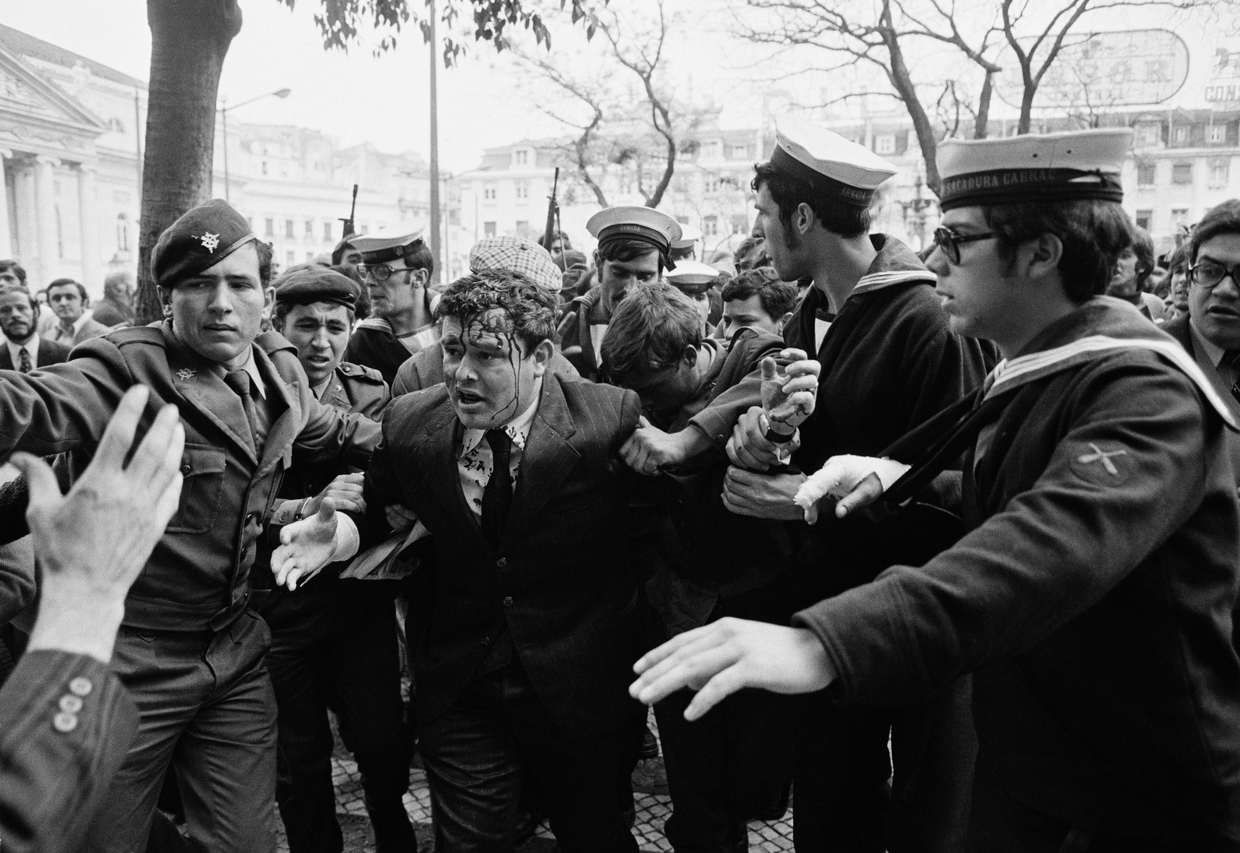
The struggle begins
After cotton-plantation workers in the region Baixa do Cassanje went on strike on January 3, 1961, demanding higher wages and better conditions, mass unrest broke out. Demonstrations were followed by severe reprisals by the security forces, including the aerial bombing of villages. Several thousand Africans died. In retaliation, on February 4, 1961, MPLA guerrillas attacked the police station in Luanda and the Sao Paulo prison.
On March 15, 1961, about 5,000 Holden Roberto UPA rebels invaded Angola from the territory of Zaire. The swift raid took the Portuguese troops by surprise – Roberto’s supporters managed to capture a lot of villages and kill a large number of colonial officials, white settlers and common Africans. Within a few days, Portuguese power in northern Angola collapsed, and the surviving whites fled to Luanda. The refugees’ stories created panic in the Angolan capital.
Holden Roberto was confident that one decisive blow would be enough to force the Portuguese to abandon Angola. However, Portugal behaved differently. The authorities immediately started to send troops from the metropolis. This was how the Angolan War for Independence began, and lasted for 13 years.
Between April and August 1961, more than 20,000 Portuguese troops were sent to Angola: anti-guerillas units, paratroopers, marines, cavalry, artillery, as well as air force and navy. By September, northern Angola was cleared of UPA militants. In the first year of the war, 30,0000 Angolan civilians died and around 500,000 fled to Zaire. During that fight with the Portuguese, the first signs of strain appeared between the MPLA and UPA – the parties had different goals and did not share the same approach. Later, it developed into open confrontation, and then into a civil war, which ran parallel to the anti-colonial war.
Neto and Savimbi on the way
In 1962, the MPLA selected a new leader, Agostinho Neto, and reaffirmed its policies for an independent Angola. The same year, UPA changed its name to National Front for the Liberation of Angola (FNLA). Each party considered itself to be the only representative of the Angolan peoples’ interests. The MPLA actually had more merit in this dispute – it adhered to the principles of internationalism, while the FNLA represented mainly the interests of the Bakongo people.
In 1966, a new political force appeared on the Angolan political scene. The third player was charismatic leader Dr. Jonas Savimbi. He broke from the FNLA in 1964 and, two years later, he formed the National Union for the Total Independence of Angola (UNITA). This movement drew its main strength from Angola’s biggest two-million-strong ethnic group, the Ovimbundu. Thus, Portugal had to face not one, but three political movements with military wings: the MPLA, FNLA and UNITA.
That same year, the MPLA expanded their insurgency operations to the east of Angola and opened the Eastern Front. Since Savimbi’s UNITA was, at this stage, also a pro-socialist movement, the MPLA decided to join forces. For four years, the guerrillas were quite successful and regularly attacked Portuguese forces, slowly gaining control over territory.
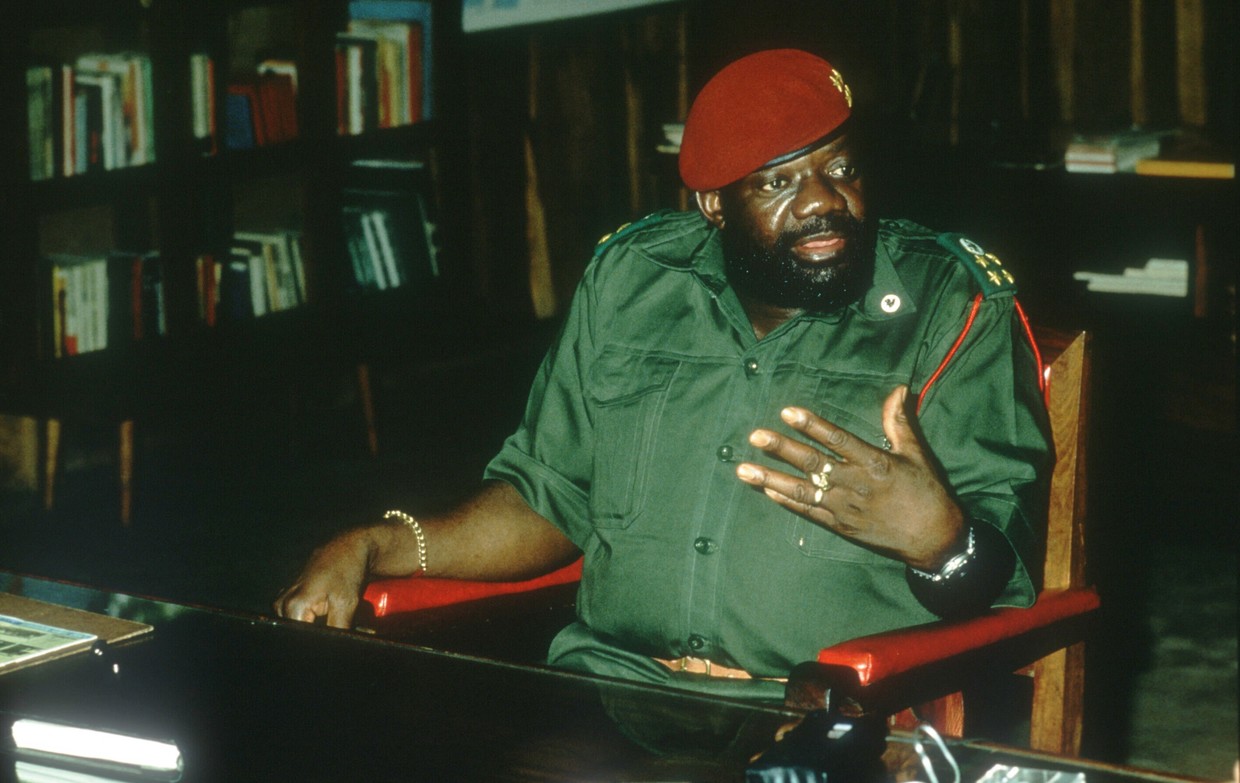
Lisbon puts on a good face
Finally, in 1970, Lisbon realized that, in addition to military action in Angola, it was necessary to change policy. Portugal had adopted a new strategy – improving the lives of the local population. As well as launching a massive anti-guerilla campaign, Portuguese authorities also pursued various ways of winning over the local population. Massive vaccination campaigns were organized, along with medical check-ups, sanitation and water improvement. Clinics, cattle pens and dips, schools were rapidly developed in rural areas. A major element of this strategy was the concentration of the population in strategic hamlets or “defended villages.”
At the same time, an extensive road-building program was launched: almost 7,000km of roads were constructed by 1974 to provide infrastructure for the “social promotion policy.” These were massive improvements, but the “hearts and minds” campaign could not alter the political alienation felt by the majority of blacks.
Still, Portugal almost achieved a victory in Angola. By January 1974, areas of guerrilla activity accounted for less than 2% of the country’s territory. Militarily, the rebels were on the verge of defeat.
Mutiny aboard: Spinola arrives
However, since the late 1960s, Portugal had begun to experience increasingly serious problems with recruiting for the army. Portuguese youths en masse tried to avoid military service, leaving for France or Germany. More than 20% of young Portuguese had no desire to be conscripted for four years (two of which had to be spent in Africa).
The war consumed almost half of the budget, turning Portugal into the poorest state in Europe. The economy could not withstand the burden that fell on it due to years of colonial war. Moreover, the political expediency of the war in Africa was becoming dubious. It was clear that, after so many years of armed resistance, the colonies would no longer be able to maintain the social and political order that existed before the war.
In the summer of 1973, some Portuguese Army officers, dissatisfied with the existing situation, had organized the Armed Forces Movement (MFA). This very quickly became popular among the army. In early 1974, the deputy chief of the General Staff of the Portuguese Army, General Antonio de Spinola, published the book Portugal e o Futuro (“Portugal and the Future”). It stated that the current conflict had no military solution. The book caused strong debate in Portugal – and Prime Minister Caetano (who had replaced Salazar in 1968) dismissed Spinola from office. After this, the MFA set its sights on overthrowing the government. On the morning of April 25, 1974, army columns entered Lisbon and occupied key installations in the capital without any resistance. In the evening, it was announced that power would be transferred to the Junta of National Salvation led by General Spinola.
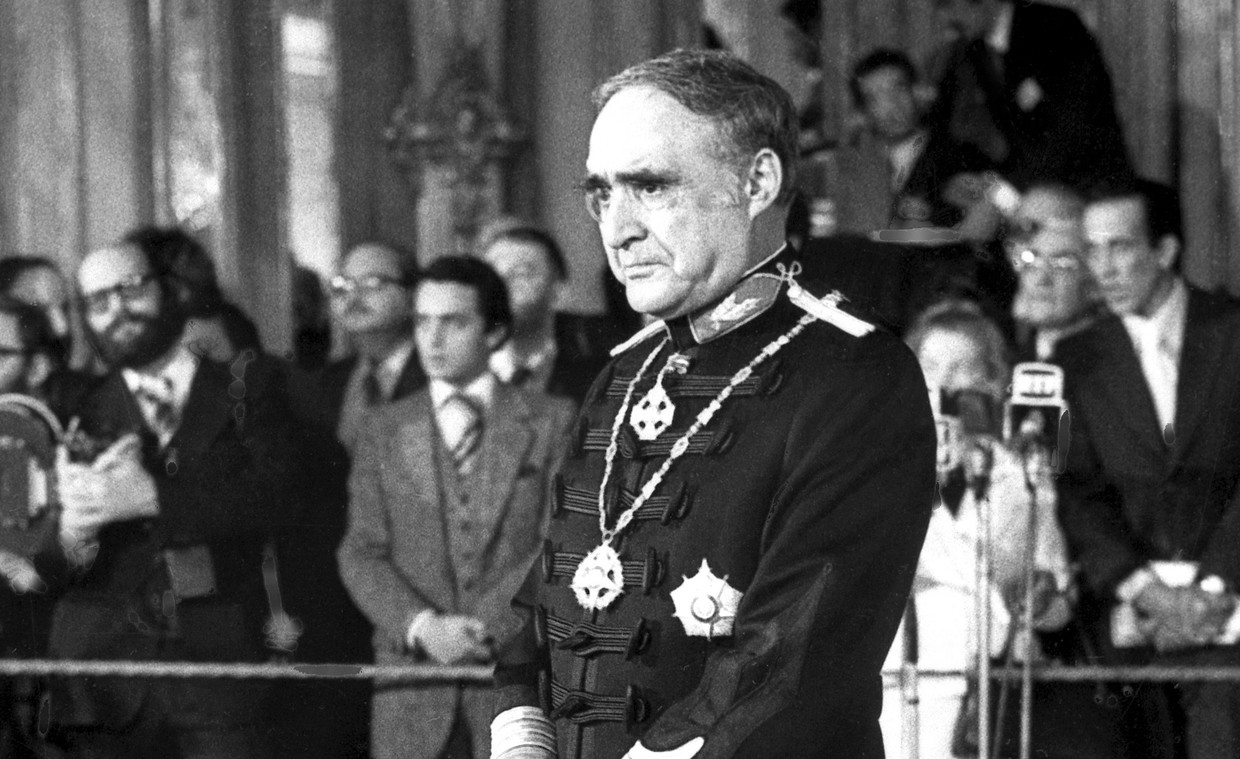
The coup in Lisbon came as a complete surprise to everyone, including the overseas provinces. Immediately after the coup, the desire of the Portuguese Army in Angola to continue the war declined catastrophically – the soldiers simply refused to leave the barracks and fight.
Agreements signed, but no peace reached
On June 14, 1974, UNITA was the first to sign a ceasefire agreement with the Portuguese authorities. By the end of June, MPLA units also ceased active operations. On October 15, the FNLA signed a ceasefire agreement with the Portuguese. All three national liberation movements opened their offices in the main cities of Angola, attracting new members.
On January 10, 1975, in the town of Alvor, an agreement was signed between the Portuguese government and the three liberation movements. The date of declaration of independence was set as November 11, 1975. Until then, the country would continue to be governed by the Portuguese high commissioner.
Despite the signed agreement, tensions between the Angolan movements did not decrease. The MPLA had plans to transform Angola into a socialist-oriented country under the auspices of the Soviet Union, and did not want to share power with nationalists from the FNLA and UNITA. As for the latter, they did not want the MPLA to come to power, opposing the “Sovietization of Africa.”
In March 1975, FNLA units attacked the MPLA in Luanda. The MPLA successfully repelled the attacks. By mid-summer, they completely drove Roberto’s partisans out of the capital. At the same time, the MPLA took control of the large cities, as well as the important seaports. Then other countries got involved in the Angolan quagmire.
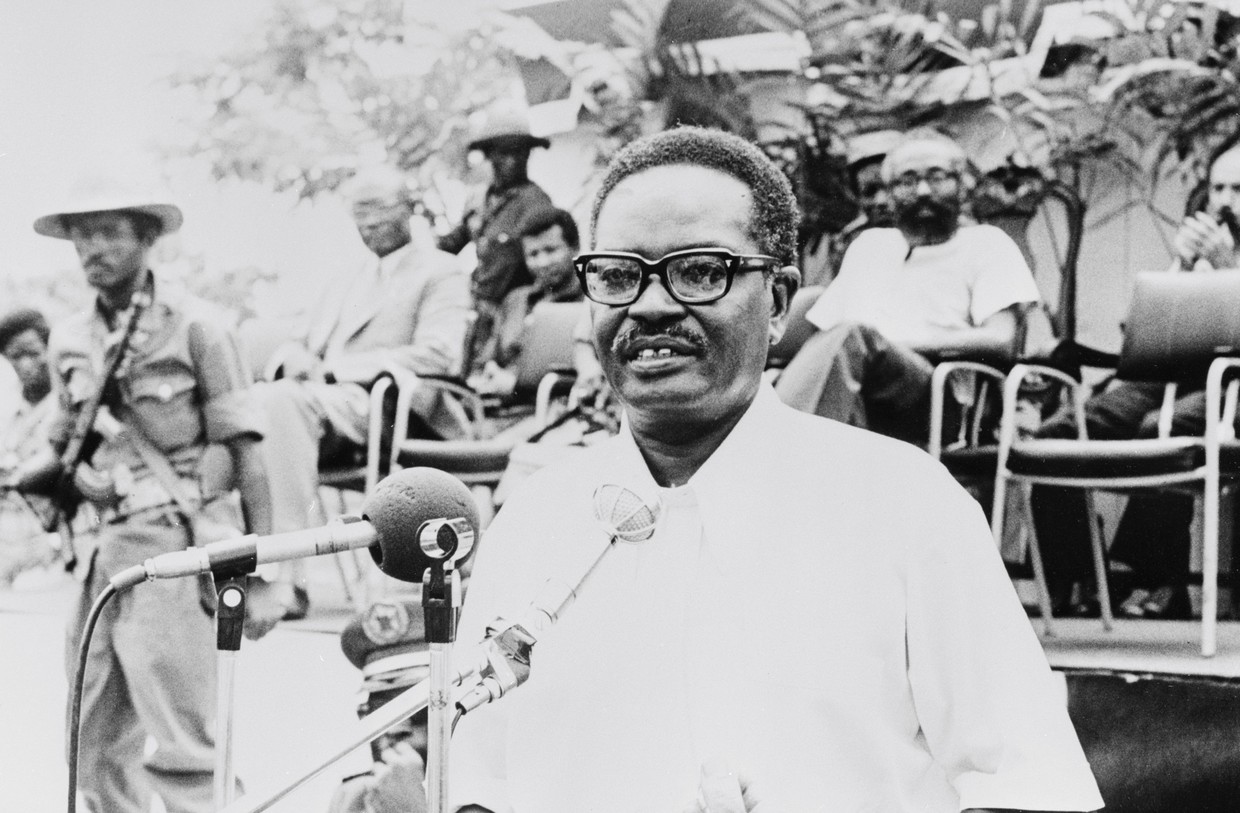
New actors on the stage
In July, the United States began supplying weapons to the FNLA. The UNITA leader turned to South Africa for help. In September 1975, South Africa sent military instructors to train UNITA fighters. The USSR decided to support the MPLA.
Unexpectedly, a new player appeared on the scene – Cuba. In August 1975, a Cuban military mission came to Angola, and by mid-October, there were almost 500 military advisers in country. By mid-October, the MPLA controlled 12 provincial capitals out of 16 in the country.
On October 14, 1975, South Africa decided to switch to open military intervention and launched “Operation Savannah.” The South African Defence Force’s (SADF) mechanized combat groups crossed the border from Namibia and began to rapidly advance north. In November, South African soldiers engaged the Cubans for the first time. Having learned about this, Cuban leader Fidel Castro decided to send regular units of the Cuban Armed Forces to Angola.
Both UNITA with SADF (from the south) and the FNLA, advancing from Zaire in the north, sought to enter Luanda by November 10. However, the MPLA units with Cuban instructors and Soviet weapons successfully held back this offensive. On the night of November 10-11, 1975, FNLA troops and units of the armed forces of Zaire suffered a crushing defeat in the Battle of Quifangondo, which determined the future fate of Angola. The defeat of the FNLA was so devastating that the movement ceased to exist and its leader Roberto Holden disappeared from the political scene.
The capital remained in the hands of the MPLA. The next day, November 11, 1975, the independence of the People’s Republic of Angola was officially proclaimed. Thus, the declaration of independence was carried out under the authority of the MPLA and the movement became the ruling party in the newly independent Angola. On the same day, Agostinho Neto was proclaimed the first president of Angola, and the independence of Angola was recognized by the Soviet Union, and Soviet-Angolan diplomatic relations were established.
Having achieved independence, Angola was not immediately able to breathe a sigh of relief: the civil war between the conflicting factions was continued to gain momentum and only ended in the 21st century – in 2002.
*

